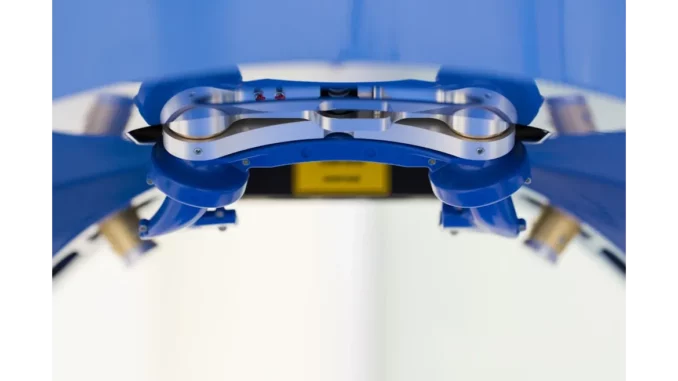
In the rapidly evolving realm of healthcare technology, the Ophthalmology Picture Archiving and Communication System (PACS) market is charting a remarkable upward trajectory. Propelled by groundbreaking advancements in medical imaging and a growing demand for efficient management of ophthalmic data, this sector is set to reach unprecedented heights. To delve deeper into this burgeoning field, I engaged with Dr. Laura Mitchell, a distinguished ophthalmologist and consultant who expertly navigates the intricate world of digital imaging solutions.
Dr. Mitchell’s practice, located in the bustling heart of London, is a pioneer in the adoption of cutting-edge technology in ophthalmic care. From her perspective, she has observed the profound evolution brought about by PACS over the years. “The integration of PACS into our practice has been nothing short of transformative,” she notes, her enthusiasm palpable. “It has revolutionised the way we store, retrieve, and share patient images, which is vital for timely and precise diagnoses.”
The global Ophthalmology PACS market was valued at USD 167.8 million in 2023, with projections indicating a surge to USD 359.8 million by 2034. This growth is driven by a compound annual growth rate (CAGR) of 7.3%. Dr. Mitchell attributes these figures to the rising prevalence of eye-related conditions such as glaucoma, age-related macular degeneration (AMD), and diabetic retinopathy. “We’re encountering more patients who require regular imaging for these conditions,” she elaborates. “PACS systems enable us to manage this demand efficiently, ensuring that we deliver optimal care.”
Technological advancements in medical imaging have been instrumental in this market expansion. Innovations like optical coherence tomography (OCT) and fundus photography have significantly enhanced the quality and volume of data obtained during eye examinations. “These technologies are game-changers,” Dr. Mitchell asserts. “The clarity and detail provided by OCT, for instance, allow us to detect issues much earlier than before.”
Ophthalmology PACS is categorised into integrated and standalone systems, each fulfilling distinct needs within the healthcare landscape. Dr. Mitchell’s clinic has adopted an integrated PACS system, which operates seamlessly with their existing electronic medical records (EMRs). “For a practice of our size, this integration is crucial,” she explains. “It enables us to centralise patient data, improving workflow and minimising the risk of errors.” Nonetheless, she acknowledges that standalone PACS solutions have a niche, especially in smaller clinics with limited budgets. “Standalone systems are a cost-effective option for practices that don’t require full integration,” she remarks, highlighting the market’s adaptability to diverse healthcare environments.
In terms of delivery models, the decision between on-premise and cloud-based systems is a pivotal one for many practices. Dr. Mitchell’s clinic utilises a cloud-based PACS solution, a choice informed by the system’s scalability and flexibility. “Cloud-based systems are ideal for us,” she explains. “They facilitate remote access, which is invaluable, particularly as we broaden our teleophthalmology services.” This shift towards cloud-based solutions aligns with emerging market trends. Dr. Mitchell expresses particular excitement about the transformative role of artificial intelligence (AI) in ophthalmic imaging. “AI-powered image analysis is becoming a cornerstone of modern ophthalmology,” she observes, noting how AI algorithms assist in detecting early signs of diseases like AMD. “It’s akin to having an extra set of expert eyes, ensuring nothing is overlooked.”
Despite these advancements, the market is not devoid of challenges. Data security remains a considerable concern, especially for cloud-based systems. Dr. Mitchell emphasises the necessity of robust cybersecurity measures. “Patient data protection is paramount,” she insists. “We must ensure compliance with regulations such as GDPR to maintain trust and safeguard sensitive information.”
Regionally, the market’s growth is varied, with North America currently leading the charge, attributable to its advanced healthcare infrastructure. However, Dr. Mitchell identifies substantial potential in the Asia-Pacific region. “Countries like China and India are investing heavily in healthcare technology,” she notes. “As they continue to develop, the demand for efficient data management will undoubtedly increase.”
Looking towards the future, Dr. Mitchell remains optimistic about the continued evolution of the Ophthalmology PACS market. “The integration of AI and cloud technology is merely the beginning,” she predicts. “As we advance, these systems will become even more integral to our practice, enhancing patient care and streamlining operations.”
Dr. Mitchell’s insights offer a compelling glimpse into the dynamic world of ophthalmology PACS, underscoring the significance of these systems in contemporary healthcare. Her experiences highlight both the opportunities and challenges that lie ahead. As the market continues to expand, driven by innovation and a commitment to improving patient outcomes, it is evident that a bright future awaits ophthalmology PACS.


Be the first to comment